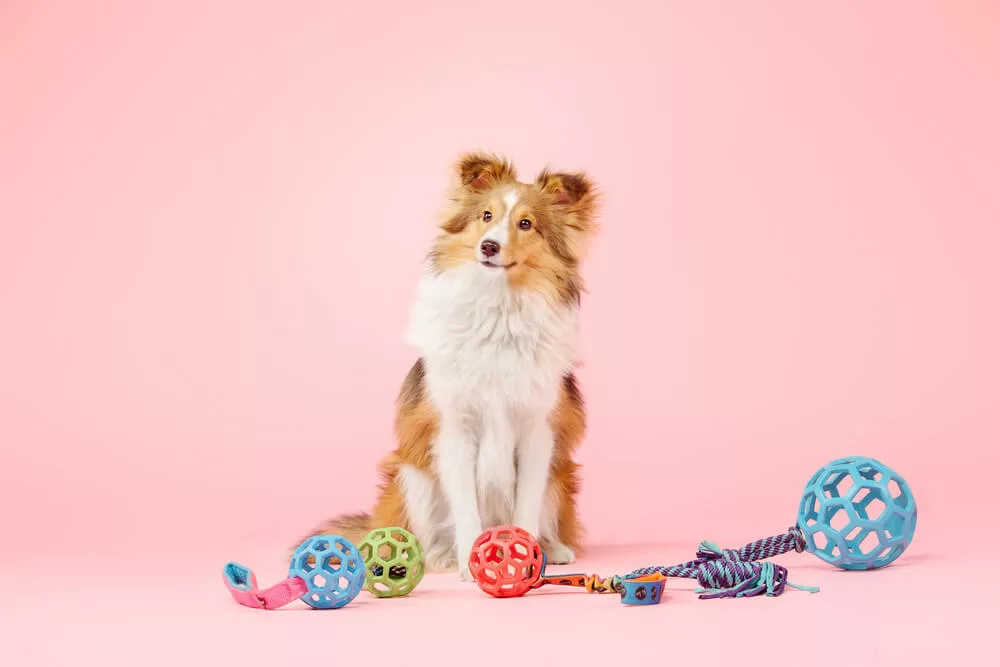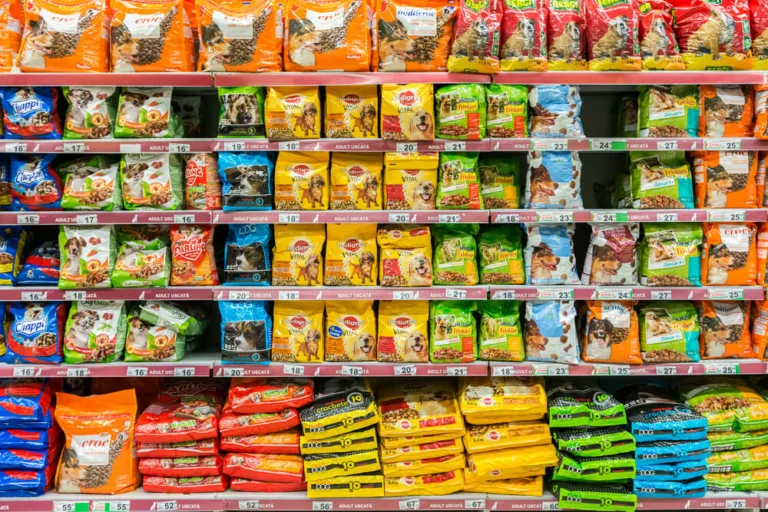What Makes Dog Toys Dangerous?
Dog toys are more than just a source of entertainment for your furry friend; they’re also crucial for their physical and mental health. However, not all dog toys are created equally. Some can pose serious risks to your pet’s health. Let’s explore the potential hazards associated with dog toys, focusing on toxic materials, chemicals, and harmful materials commonly found in them.
Toxic Materials in Dog Toys
Several dog toys contain potentially toxic materials that could affect your pet’s overall health. Among these toxic materials are PVC, phthalates, Bisphenol A (BPA), lead, chromium, cadmium, and formaldehyde. These substances can leach out over time, especially when chewed or ingested, leading to various health issues such as digestive problems, hormonal imbalances, and even cancer.
Toxic Chemicals in Dog Toys
In addition to the harmful materials mentioned above, some pet toys also contain hazardous toxins like arsenic, chlorine, and bromine. Shockingly, 45% of over 400 pet products tested had detectable levels of these harmful toxins. Exposure to these chemicals can lead to an array of health problems, from skin irritation and allergies to severe conditions like organ damage and cancer.
Potentially Harmful Materials in Dog Toys
Aside from chemical hazards, physical risks associated with dog toys should not be overlooked. For instance, your dog could ingest fluff, fabric, or other small parts from their toys. This could lead to digestive issues, including obstructions or even poisoning. Furthermore, toys that aren’t “dog-proof,” such as those containing ribbons, strings, or eyes that could be chewed off and ingested, should be avoided or altered.
Moreover, toys that are too small can pose a choking hazard, especially for smaller dogs. On the other hand, toys that are too heavy or too hard can cause damage to teeth and gums. Specific types of toys, like marrow bones, may also pose particular risks.
How to Determine if a Dog Toy is Safe and non-toxic dog toys?
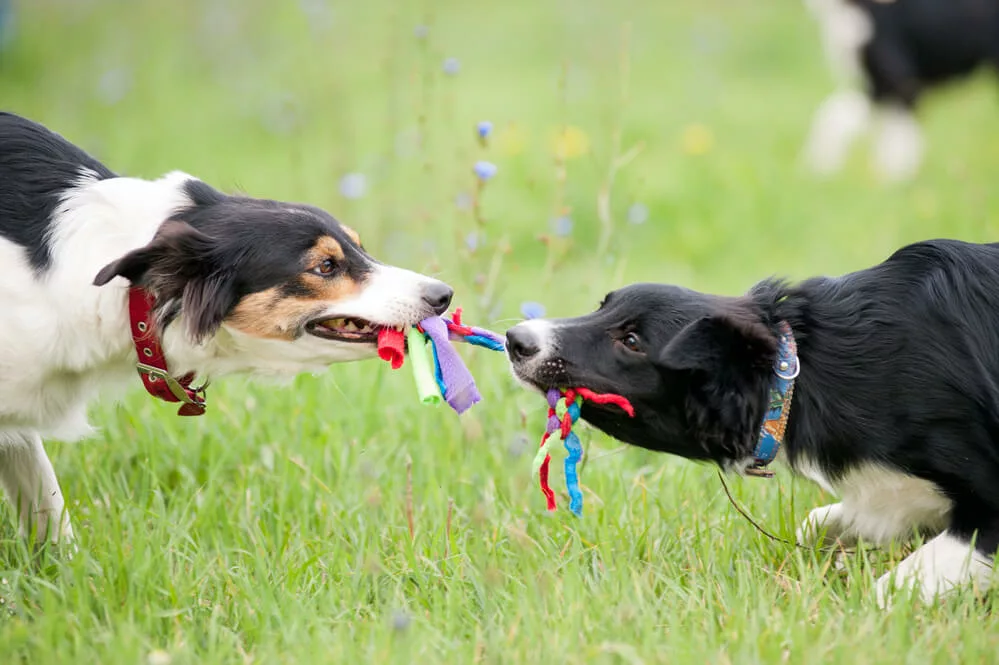
As a pet owner, your dog’s safety is always a priority. This includes the toys they play with daily. But how can you ensure that your dog’s favorite toy is safe?
Non-Toxic Dog Toys
Non-toxic dog toys are made from materials that are safe for your dog to chew on and play with. Some popular non-toxic materials include FDA-compliant materials like Zogoflex, natural rubber, and rice husk. Brands such as West Paw, PETSTA, and P.L.A.Y offer a range of non-toxic dog toys available in various shapes and sizes.
When shopping for dog toys, look for products labeled as BPA-free, phthalate-free, latex-free, and lead-free. It’s also beneficial to choose toys made in countries with strict safety standards, such as the USA.
Toxic Dog Toys to Avoid
Unfortunately, many dog toys on the market contain toxic materials that can harm your pet. These include PVC, phthalates, BPA, lead, chromium, melamine, arsenic, bromine, and formaldehyde. Exposure to these toxins can lead to a range of health issues, from skin irritations and allergies to serious conditions like organ damage and cancer.
To identify potentially harmful toys, check the product labels for any of the above-listed toxins. If information about the toy’s materials isn’t readily available, contact the manufacturer or opt for a different toy.
Safety Standards for Dog Toys
Several safety standards should be considered when choosing a dog toy. These include:
- Durability: Toys should withstand your dog’s chewing and not break into small pieces that could be swallowed.
- Size: The toy should be large enough so that it can’t be swallowed but small enough for your dog to hold and chew.
- Choking Hazards: Toys should not have parts that can easily be chewed off and swallowed, such as buttons, ribbons, or strings.
Organizations such as the American Pet Products Association (APPA) and the Pet Industry Joint Advisory Council (PIJAC) provide guidelines and resources on pet product safety.
What are the Most Common Toxic Materials Found in Dog Toys?
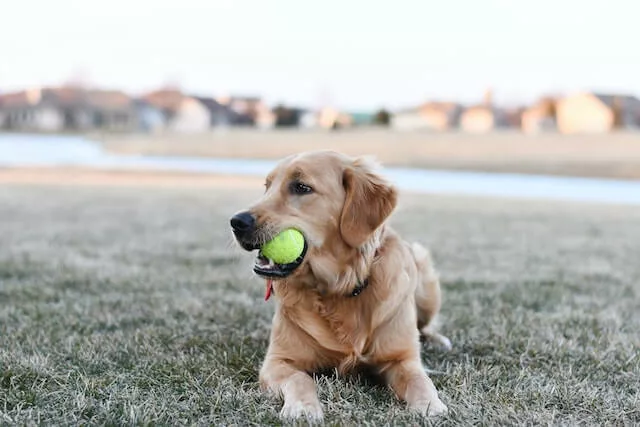
As dog owners, we always strive to provide the best for our furry friends. However, it’s essential to know that not all dog toys are safe. Some contain toxic materials that can harm your pet. This article will shed light on some of the most common toxic materials found in dog toys and how you can protect your pet from them.
BPA in Dog Toys
Bisphenol A (BPA) is a chemical used in the manufacturing of many plastic products, including dog toys. While BPA may make toys more durable, it can also pose health risks to dogs. When chewed or ingested, BPA can leach out and enter your dog’s system, potentially causing hormonal disruptions, obesity, and even cancer.
Examples of dog toys that may contain BPA include certain rubber or plastic chews, pullies, and fetching toys. It’s always best to ask the manufacturer about the presence of BPA in their products.
Lead Poisoning in Dog Toys
Lead is another harmful substance that can be found in dog toys. Lead poisoning in dogs can cause severe health issues, such as gastrointestinal problems, neurological disorders, and even death.
Lead can be detected in a variety of dog toys, including painted toys or those made from vinyl. If you suspect lead poisoning, bring your dog and the suspected toy to a vet for evaluation.
Instead of lead-based toys, consider safer alternatives like toys made from natural rubber and rice husk, which are completely free of toxins.
Chromium and Arsenic in Dog Toys
Chromium and arsenic are two other toxic materials that can be found in dog toys. These heavy metals can cause liver and kidney damage in pets. Shiny toys in pet stores often contain toxic levels of chromium.
It’s crucial to be vigilant about the toys you buy for your dog. Ask manufacturers about the presence of these toxic materials in their products. Additionally, avoid toys that seem suspiciously cheap, as they may contain harmful substances.
What are the Safest Types of Dog Toys?
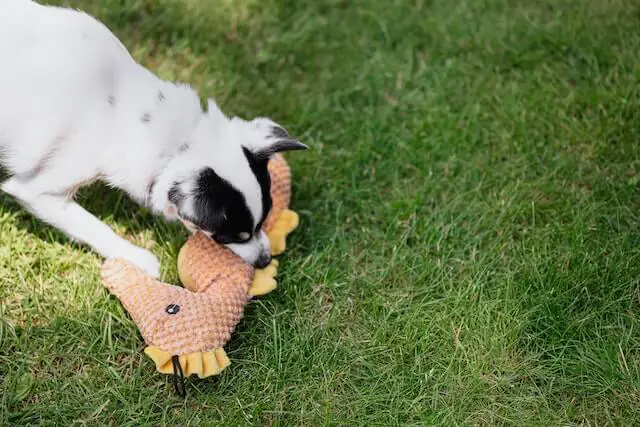
As dog owners, our pets’ safety is always a top priority. This includes the toys we let them play with. While they may seem harmless, some dog toys can pose potential risks to our furry friends. We’ll explore the safest types of dog toys to ensure your dog’s playtime is both fun and safe.
Natural and Organic Dog Toys
Natural and organic dog toys are an excellent choice for pet owners who want to avoid any potential health risks associated with synthetic materials. These toys are made from natural materials such as cotton, wool, and hemp – all of which are safe for dogs to chew on. Plus, they are often dyed with natural, non-toxic colors.
Not only are these toys safer, but they’re also more environmentally friendly. So, you’re not just protecting your pet; you’re also doing your part for the environment. Brands like Honest Pet Products and Purrfect Play offer a wide range of organic dog toys that are both safe and durable.
Non-Toxic Rubber Dog Toys
Non-toxic rubber dog toys are another safe option for your furry friend. These toys are typically free of harmful chemicals like BPA and phthalates, which can leach out during play and pose health risks.
When choosing a rubber dog toy, look for ones labeled as “non-toxic” or “BPA-free.” Brands like Kong and West Paw Design are known for their high-quality, non-toxic rubber dog toys that are perfect for both chewing and fetch games.
Chew Toys Made from Animal Products
Chew toys made from animal products, such as rawhide bones, antlers, or bully sticks, are also a safe choice for dogs. They are natural, highly digestible, and can help clean your dog’s teeth as they chew.
However, it’s important to supervise your dog while they’re enjoying these types of toys to prevent accidental choking. Always choose size-appropriate chews for your dog, and replace them once they become small enough to swallow.
Choosing the right type of dog toy involves considering your dog’s size, age, and chewing habits. Always prioritize toys made from natural or non-toxic materials, and avoid toys with small parts that could be a choking hazard.
Remember, your dog’s safety should always come first when it comes to playtime. By choosing the safest types of dog toys, you can ensure that playtime is always a joyous and worry-free experience for both you and your furry friend.
What are Alternative Pet Products to Consider?

For many pet owners, their furry friends are part of the family. Therefore, it’s natural to want the best for them in every aspect, including their toys, food, and other products. In recent years, there has been a growing interest in alternative pet products that offer healthier, more sustainable options for our pets. This article will explore some of these alternatives and provide you with valuable information to make the best decisions for your pet.
Rawhide-Free Dog Chews
Rawhide chews have long been a favorite for dogs, but they come with potential risks such as choking and digestive blockages. Thankfully, several rawhide-free alternatives on the market are safer and just as satisfying for your dog. Brands like Only Natural Pet offer a range of natural chews made from ingredients like sweet potato, fish skin, and bully sticks. These products are not only safer but also help clean your dog’s teeth and keep them entertained.
Interactive Puzzle Toys for Dogs
Interactive puzzle toys are a fantastic way to keep your dog mentally stimulated and prevent boredom. These toys often involve hiding treats or kibble in compartments that your dog needs to figure out how to access. They’re a fun challenge for your dog and can keep them occupied for hours. Companies like Outward Hound and Nina Ottosson offer a wide variety of puzzle toys to suit all breeds and sizes.
Chew Toys without Synthetic Squeakers
While dogs love the squeaky sounds their toys make, many of these toys contain synthetic squeakers that can be a choking hazard if the toy is ripped apart. Fortunately, several companies offer chew toys with safer alternatives. For example, West Paw Design’s Zogoflex toys are durable, non-toxic, and come with a one-time replacement guarantee if your dog manages to destroy them.
Can dog toys be toxic?
Yes, some dog toys can be toxic if they are made with harmful materials.
What should I know about dog toy safety?
It’s important to ensure that the dog toys you give your dog are safe and free from toxic materials.
Are there any specific materials that are toxic to dogs?
Yes, certain materials such as lead, phthalates, and BPA can be toxic to dogs if ingested.
Are all rubber dog toys safe?
Not all rubber dog toys are safe. Some may contain toxic chemicals. Look for dog toys that are labeled as non-toxic.
How do I know if my dog’s toy contains toxic materials?
Check the label or product description of the toy. Look for information about the materials used and ensure they are non-toxic.
What should I do if I suspect my dog has ingested a toxic toy?
If you suspect your dog has ingested a toxic toy, contact your veterinarian immediately for advice and possible treatment.

